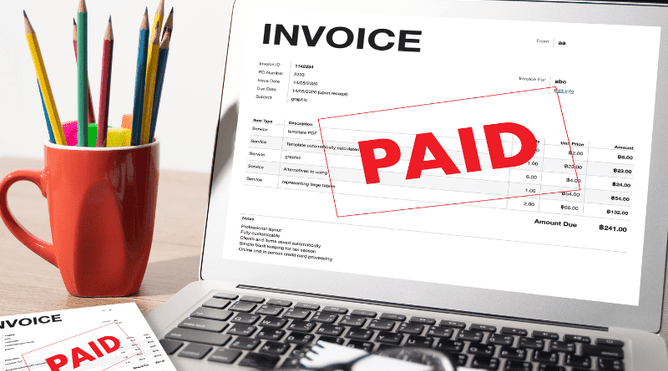You might see quite a few different sales invoices; some might have a date on, others don't; some have VAT on but no VAT number on them. It’s not surprising that people get confused, so what should you include on your Sales Invoices?
HMRC says that a sales invoice should include:
The word ‘invoice’ should appear somewhere.
a unique invoice number
your company name, address and contact information.
the company name and address of the customer you're invoicing
a clear description of what you're charging for- what’s been sold?
the date of the invoice
the amount(s) being charged
the date you provided the goods or services (which is also known as the supply date)
VAT amount if applicable - (only if you are VAT registered)
the total amount owed
If you’re a sole trader, then it must also include:
Your name and any business name you use
An address where any legal documents can be delivered to you if you are using a business name
Limited company invoices must also include:
If your business is a limited company or LLP, your invoices must also show the full company name as it appears on the certificate of incorporation and its Companies House registration number and address. If you put the name of one director or member on your invoice, you must include the names of all the directors or members.
If you’re registered for VAT then it must include:
Whether you’re a sole trader or your business is a limited company, if you're registered for VAT, you must include your VAT number on your invoices and comply with HMRC's rules about VAT invoices. These rules state that an invoice must include:
an invoice number which is unique and follows on from the number of the previous invoice (if you cancel a serially numbered invoice, you must keep it to show to a VAT officer in the event of a VAT inspection)
your business’s name and address
your business’s VAT registration number
the invoice date
the time of supply (also known as the tax point) if this is different from the invoice date
your customer's name (or trading name) and address
a description sufficient to identify the goods or services supplied to the customer
the rate of any cash discount
the total amount payable, excluding VAT
the total amount of VAT charged, expressed in sterling
For each different type of item listed on the invoice, you must also show:
the unit price or rate, excluding VAT
the quantity of goods or the extent of the services
the rate of VAT that applies to what's being sold
the rate of any discount for that item
And if you issue a VAT invoice that includes zero-rated or exempt goods or services, you must:
show clearly that there is 0%, or no VAT payable on those goods or services
show the total of those values separately
If you make retail sales and you make a sale of goods or services for £250 or less (including VAT), you can issue a simplified VAT invoice.

